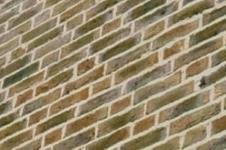Study shows building fabric alterations are the only way to hit 60% reduction target
Local authorities and housing associations seeking to cut carbon emissions from sixties-built tower blocks will have to spend around £7,000 per dwelling if they want to meet government targets.
Figures from an Energy Saving Trust (EST) study found that alterations to the building fabric, along with measures such as new boilers and controls, are the most cost-effective way to reduce carbon dioxide emissions by 60% - the government's target for 2050.
The study, commissioned by the EST and produced in partnership with Mears Group and Travis Perkins, looks at low-, medium- and high-cost measures for reducing carbon emissions from flats within a sixties tower block built using a variety of construction types.
Under the low-cost (up to £1,000) measures, which included low-energy lighting, cavity wall insulation, loft insulation and draught proofing, carbon emissions could be reduced significantly but did not reach the 60% target. This was achieved only by adding in measures such as internal wall insulation, replacement front doors and new boilers.
The study looked at the most efficient way to spend money from several angles, including the cost per tonne of carbon dioxide saved, so that building owners can identify the best areas to target. Costs varied from around £2,000 per tonne of carbon dioxide up to £13,000 per tonne, highlighting the need to choose carefully when maximising spending efficiency across a property portfolio.
Mat Colmer, development manager for housing at the EST, said: “The benefit of this work is that we are giving people the kind of scenarios and solutions that give the most cost-effective carbon savings.”
The report also looked at the SAP point increases in order to determine the costs associated with a reduction in the likelihood of fuel poverty.



























No comments yet